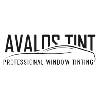
Avalostint
Uploaded on Feb 6, 2024
Category
Automotive
Navigate window tinting laws effortlessly with our comprehensive guide! Learn regulations, choose compliant tints, rely on professional installation, and stay updated on legal requirements to ensure compliance and avoid penalties. Stay informed and drive legally!
Category
Automotive
Your Ultimate Guide to Window Tinting Compliance!
Your Ultimate Guide
to Window Tinting
Compliance
We need to recognize this term before
we understand the rules on window
tinting. VLT stands for Visible Light
Transmission. Mostly, it is the volume
of light that can pass through the film
and glass from any vehicle window.
Each state sets maximum VLT values
limit for certain windows on a car.
avalostint.com Avalostint
What is VLT (Visible Light
Transmission)?
We need to recognize this term before we understand
the rules on window tinting. VLT stands for Visible Light
Transmission. Mostly, it is the volume of light that can
pass through the film and glass from any vehicle
window. Each state sets maximum VLT values limit for
certain windows on a car.
The greater the number of tint, the more light that can
pass through the tint. A VLT of 50% means that 50% of
light can pass through the film. If the VLT (Visible Light
Transmission) is 10%, then only 10% of the light can
pass through the window, and that will appear darker.
avalostint.com
Avalostint
Windshield Tinting
Tint
• Non-reflective window tint is allowed beside
the top of the windshield above the
manufacturer’s AS-1 line in vehicle.
• The front side windows must allow over 35%
of light in.
Front Side
Windows Tint
• Nevada law permits a minimum of 35%
light transmission for front side windows
tint.
Avalostint
Back Side Windows
Tint
• There are no restrictions on tint darkness for
the back side windows in Nevada.
Rear Window
Tint
• There are no limitations on tint darkness
for the rear window
Medical Avalostint
Exemptions Tint
• Individuals with certain medicinal situations may be
excused from these tinting regulations, but they usually
require a certificate or documentation.
• Always confirm the present laws with the Nevada
Department of Motor Vehicles (DMV) or another official
source before applying window tint to any vehicle window.
Furthermore, Legal tinting laws can also apply to other
types of vehicles, such as trucks and SUVs, so be sure to
check the exact regulations that apply to your vehicle type
in Nevada.
Reflectivity
• Tint on all windows must not be more than
20% reflective.
Why Does Nevada Limit the Window
Tint? There are practical reasons for that, most of which is related to public safety. One of the main reasons of
car accidents is distracted driving and window tint
can be one of the reason.
There are many reasons of distraction in driving, but
texting or talking on mobile while driving are the
main reasons. It is always easier to text and talk on
phone, if no one can see into your vehicle. For
avoiding this reason, Nevada City has taken the
practical amount of not permitting anyone to tint
vehicle window most of their windshield and to not
use a shadier tint on the sides in the front of window.
This way, law implementation can see into the
vehicle and notice whether the driver is texting or
talking on the phone or doing anything unethical,
when they should be focused on driving.
www.reallygreatsite.com
Contact Us
+1 408-807-
6641
heatcoolappliance.com
[email protected]
m
769 Regent Park Dr, San Jose
Avalostint
Thank
you
Avalostint

Comments